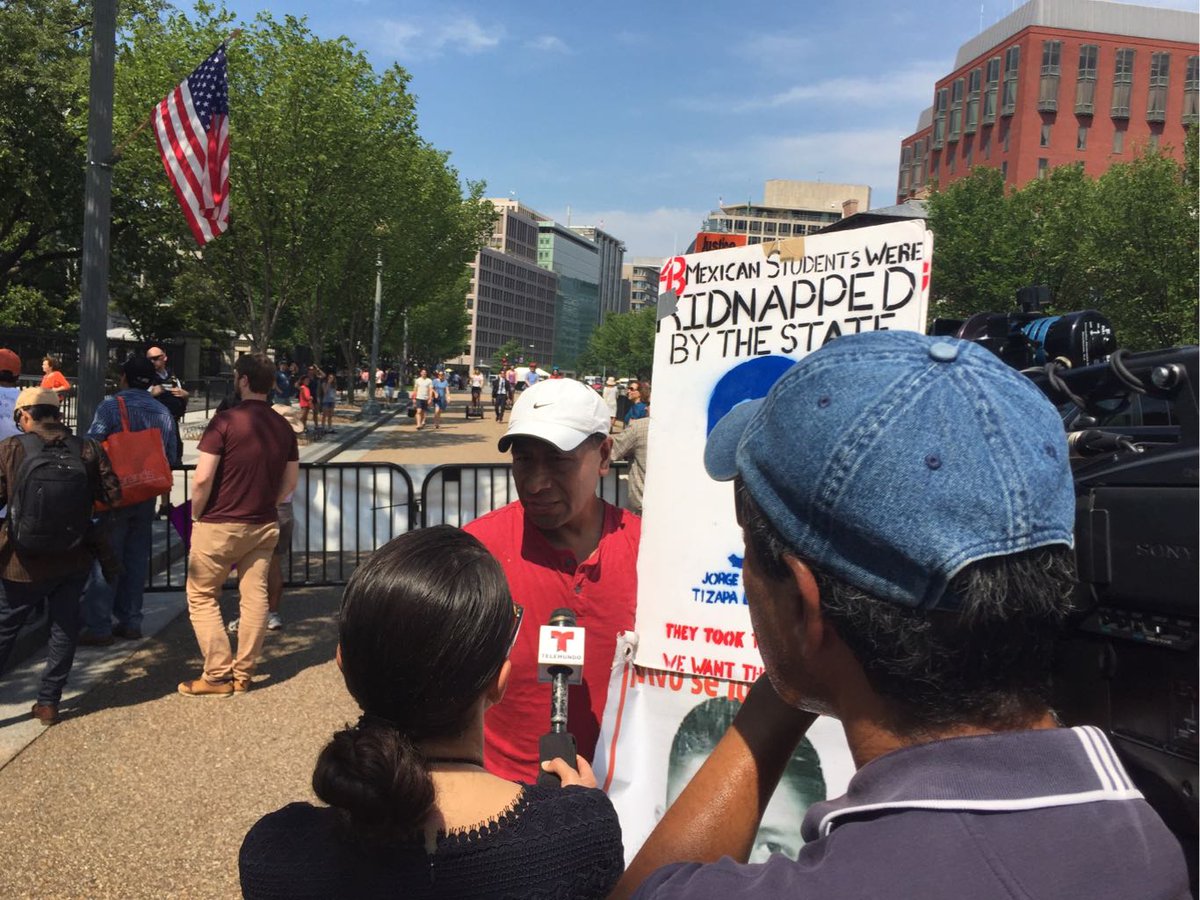Protests Over Ayotzinapa & US military Aid To México At White House (7/22/2016)
Protests were planned shortly after the White House announced EPN's visit. The Mexican government maintain its quiet over the visit for days. Through Televisa (the main owner of Univision), the Mexican government released details on the day Peña Nieto arrived to Washington DC.
I. The EPN Visit:
Follow @RicardoBLezama --- Protesters from across the U.S. East Coast gathered in front of the White House to 'greet' the deeply unpopular Mexican president, Enrique Peña Nieto. Among them was Antonio Tizapa, father of one of the disappeared Ayotzinapa students, Jorge Antonio Legideño Tizapa.
Prior to @EPN visit, Mr.Tizapa, father of #Ayotzinapa student, requests @POTUS meeting to discuss human rights: pic.lacartita.com/JHFX1dFqtO
— LaCartita (@LaCartita) 22 de julio de 2016
Mr.Tizapa requests meeting with President Obama to discuss Ayotzinapa case and human rights situation in México:
Protesters echoed Mr.Tizapa's anger at the muted U.S. response towards México's human rights crisis. Many carried signs demanding an end to Plan Merida, a U.S. military weapons and training program for México's military and law enforcement agencies. The program involves hundreds of millions of dollars spent annually on small arms, helicopters, armored vehicles and training, which are commonly used to repress protests:
II. Background On Plan Mérida
The weapons and training program was implemented towards the tail end of the Bush administration. Unfortunately, it was the Mexican government's then beleaguered President Calderon who requested the aid. This gave the Americans an invitation to implement radical foreign policy in Mexican territory. In 2006, the incumbent Partido Accion Nacional (PAN), a far right religous political party, had suffered a legitimate electoral defeat, but managed to doctor the results and maintain the presidency away from Andres Manuel Lopez Obrador. Effectively, Calderon had no legal mandate, as a blockade near the presidential palace crippled day to day business for months. Calderon created a 'drug war', then, to deploy the military througout the country and regain control through force - this is where the US stepped in more prominently.
Helicópteros para la lucha del narco se usan para represión #Nochixtlan
— Dueles México (@DuelesMéxico) 21 de junio de 2016
tw @LaCartita
vídeo @VocesOaxaca pic.lacartita.com/XP13N9hD4w
Even after interfering in México's presidential election of 2006, the US government still needed official backing to more freely subvert democracy in the country. Choice Point, an American data company, had recently been discovered to have had in its possesion, through Mexican operatives, voter roll data crucial to securing the election for Felipe Calderon. The worry, at the time, was that México would become too friendly to the Venezuelan government, altering the regional dynamic between the U.S. and Abya Yala (Latin American, to use colonial nomenclature) economies. Calderon handed the country over in exchange for managerial control and unlimited military support. Stupidly, he asked his U.S. handlers for "everything" [...], "I want everything from that show '24' (a reference to a Fox T.V series)". Since the Mérida initiative, over 160,000 people have died as a result of drug-war related violence.
III. The Washington Protest
Press aides for the Mexican government were said to be 'upset' over the presence of protesters. This was supposed to be Peña Nieto's day, presumably. While facetime with President Obama was EPN's aim, it is clear that Obama's goal was purely electoral - a sit down with the Mexican president looks good only to those who do not know about Plan Merida, basically, most of the U.S. population.
Unexpectedly, the local D.C. press got wind of the presence of Mexican protesters. They began providing coverage; here they can be seen interviewing Antonio Tizapa, father of one of the 43 disappeared Ayotzinapa students:
Mr Tizapa - father of #Ayotzinapa disappeared - engages mainstream press during @EPN visit to @POTUS white house: pic.lacartita.com/u3PrqNneOd
— LaCartita (@LaCartita) 22 de julio de 2016
Protests lasted for hours, even after Peña Nieto's badly needed press conference with Obama. Another meeting is planned for September in New York, NY. Surely, discontent will be expressed there too.


